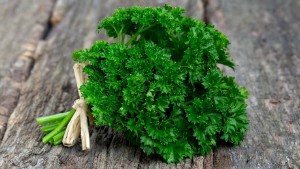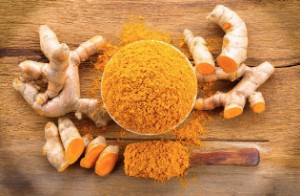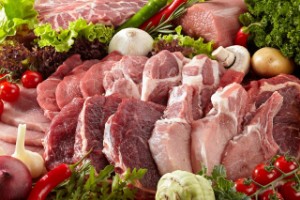Which iron—containing foods increase hemoglobin during pregnancy - Top 8
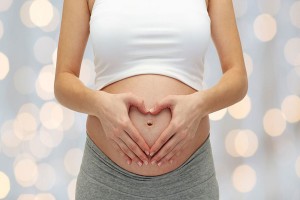 During pregnancy, a woman's body is radically rebuilt in terms of metabolism.
During pregnancy, a woman's body is radically rebuilt in terms of metabolism.
The need for many micronutrients increases dramatically, since a significant part of them goes to the development of the unborn child, and at the same time to normalize the hormonal background.
Research confirms that it is against the background of inadequate nutrition of the mother that the newborn may develop anemia – a deficiency of hemoglobin in the blood.
How can this be prevented? What foods should be included in the diet to normalize and raise the low hemoglobin of the expectant mother? What kind of diet should I follow?
Content
Why do pregnant women need to monitor their hemoglobin?
Why does the human body need hemoglobin at all? With its help, oxygen and carbon dioxide are transported in the blood. That is, hemoglobin is the most important trace element for the proper functioning of the respiratory function.
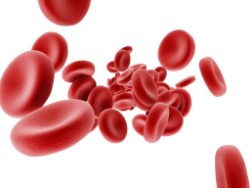 A child, while in the womb, also has a need for oxygen, but he cannot breathe on his own – gas exchange takes place through the placenta along with blood. What will happen if there is a hemoglobin deficiency? In simple terms – the unborn child will have an oxygen deficiency
.
A child, while in the womb, also has a need for oxygen, but he cannot breathe on his own – gas exchange takes place through the placenta along with blood. What will happen if there is a hemoglobin deficiency? In simple terms – the unborn child will have an oxygen deficiency
.
In critical cases, oxygen deficiency in the baby in the womb can lead to asphyxia and subsequent fetal fading. That is why it is so important to monitor the level of hemoglobin – the normal course of pregnancy directly depends on this.
It is also worth mentioning that hemoglobin deficiency may also indicate a lack of B-group vitamins and folic acid . And this is fraught with a violation of the balance of sex hormones in the body of the expectant mother, which can cause self-abortion of the fetus (premature birth, when the body provokes them on its own, even though the child has not fully formed yet).
The norm of blood content
The average hemoglobin index in an adult non-pregnant woman is 139 grams per liter of blood. During pregnancy, this indicator decreases slightly.
The following indications are not a deviation:
- First trimester – 132 grams per liter;
- Second trimester – 120 grams per liter;
- Third trimester – 112 grams per liter.
After childbirth, the hemoglobin level normalizes, but it will take from 1 to 6 months (the recovery period for each woman may vary, but after the birth of the firstborn – more than after the second and all subsequent children).
Signs of low levels
Hemoglobin deficiency in a pregnant or nursing mother can manifest itself in a very wide list of symptoms, and each woman's combination may vary dramatically.
 The most common signs are as follows:
The most common signs are as follows:
- General weakness and chronic fatigue ;
- Appearance of problems with skin, nails, hair;
- Pallor of the skin;
- Accelerated heartbeat (occurs with a significant hemoglobin deficiency when the body is experiencing oxygen starvation);
- The appearance of addiction to certain odors (most often – the smell of paint, gasoline, acetone, solvents of various types, synthetic adhesives, engine oil, exhaust gases, and so on);
- Tendency to toxicosis (especially noticeable in the early stages of pregnancy);
- Signs of immunodeficiency (tendency to infectious diseases, manifestation of thrush, skin diseases, and so on);
- Decreased taste sensitivity (also develops more often against the background of toxicosis).
But it should be borne in mind that often hemoglobin deficiency is not accompanied by any symptoms at all. However, doctors still prescribe a blood test (almost every month) to monitor the hemoglobin level in the blood of a pregnant woman.
General rules of nutrition
For the fastest normalization of hemoglobin levels in the blood during pregnancy, it is necessary Follow the following recommendations:
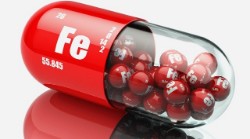
- Provide sufficient iron for the body in the food consumed. In an adult, the daily norm is only 8-15 mg per day, in pregnant women it rises to 22-25 mg.
- Ensure that the body receives sufficient amounts of B vitamins, omega-3 unsaturated fatty acids, ascorbic acid, sodium, potassium, silicon, zinc - all these trace elements increase the bioavailability of iron, that is, they help the body to absorb it normally (with a deficiency of the same folic acid, the body practically does not absorb iron).
- Include foods and dishes with complex proteins in the diet – when digested, they break down into amino acids, which just enter into a biochemical reaction with iron, vitamins, after which a hemoglobin molecule cell is created.
Doctors also recommend avoiding neuroses, stressful situations – they can make adjustments to the hormonal background, which regulates the pregnancy process itself, as well as hematopoietic function.
Not all foods and drinks rich in iron and other necessary trace elements are allowed to be consumed during pregnancy. For example, turmeric and parsley help to increase hemoglobin well. But they are also can act as antispasmodics on smooth muscles , which also causes uterine contractions. Therefore, they should absolutely not be consumed during pregnancy.
8 iron-containing products
Below we will look at 8 foods with the maximum iron content that should be included in the diet of people with low hemoglobin levels in the blood.
1. Beef
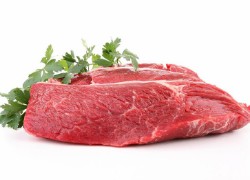 Beef is best suited for quickly restoring the balance of hemoglobin in the blood. It contains a whole chain of complex proteins, as well as iron, folic acid, and minerals.
Beef is best suited for quickly restoring the balance of hemoglobin in the blood. It contains a whole chain of complex proteins, as well as iron, folic acid, and minerals.
Nutritionists recommend eating beef "with blood" (minimum roast, that is, rare or close to it) – it retains all the nutritional properties. But deep-fried beef is less useful in this regard.
6 more types of meat to raise hemoglobin see here.
2. Mushrooms
 Dried porcini mushrooms are one of the most famous iron–containing products that can be consumed in any amount during pregnancy. In addition, they are easily digested.
Dried porcini mushrooms are one of the most famous iron–containing products that can be consumed in any amount during pregnancy. In addition, they are easily digested.
But there are not as many vitamins in them as in the same beef, so if mushrooms are eaten, then only ensuring sufficient intake of B-group vitamins and ascorbic acid into the body (in almost 95% of cases, pregnant women are prescribed multivitamin complexes, which just include all these trace elements).
3. Seafood
Almost all seafood is rich in iron and omega-3 unsaturated fatty acids. The most effective in this regard are:
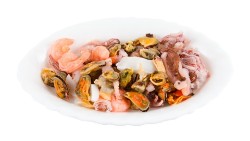
- Red fish;
- Oysters;
- Red and black caviar ;
- Fatty fish varieties (salmon, salmon, sea bass, tuna and so on).
Helps raise hemoglobin pretty well as well seaweed, brown algae - they are now also actively used in cooking. And artificial red and black caviar are also made from algae – you can try to include them in the diet (such caviar tastes significantly inferior to natural caviar).
4. Nuts
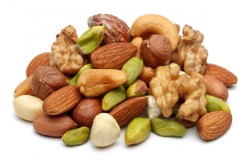 Here, in particular, walnuts and pistachios should be included – they contain omega-3 acids no less than in red and black caviar.
Here, in particular, walnuts and pistachios should be included – they contain omega-3 acids no less than in red and black caviar.
Moreover, nutritionists advise not to use dried nuts, but those that have recently fallen from a tree – in such kernels the folic acid content is very high (it is contained in the film covering the walnut kernels). Peanuts, pine nuts, hazelnuts, and hazelnuts are considered less useful in this regard.
7 nuts to increase hemoglobin levels see in a separate article.
5. Pomegranate, beetroot, carrot juices
 Many juices are good for the blood
. They contain iron, B-group vitamins, and iodine. The only caveat is –
you should not consume such juices in concentrated form
(especially for those women who often have a gastrointestinal disorder during pregnancy).
Many juices are good for the blood
. They contain iron, B-group vitamins, and iodine. The only caveat is –
you should not consume such juices in concentrated form
(especially for those women who often have a gastrointestinal disorder during pregnancy).
It is recommended to drink 2 glasses a day (before a scheduled meal, diluting with water in a combination of 1 to 1).
Carrot juice contains a high dose of vitamin A. Its excess can harm the unborn child in the womb. Regarding the possibility of using such juice, you should definitely consult with the gynecologist with whom the woman was registered.
6. Legumes
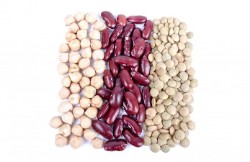 Help in general normalize the biochemical composition of the blood
, and also get a small amount of iron, folic acid.
Help in general normalize the biochemical composition of the blood
, and also get a small amount of iron, folic acid.
It is not worth abusing, since legumes can cause intestinal dysfunction, as well as flatulence, and in rare cases– constipation.
7. Wheat bran
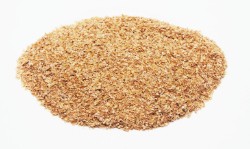 The bran itself is poorly digested, contains about 20 mg of iron per 100 grams
(of which about 20-40% are absorbed). But bran helps to normalize the work of the gastrointestinal tract, prevent constipation.
The bran itself is poorly digested, contains about 20 mg of iron per 100 grams
(of which about 20-40% are absorbed). But bran helps to normalize the work of the gastrointestinal tract, prevent constipation.
Also, doctors often recommend using them to prevent hemorrhoids (or its exacerbations), which extremely often occur against the background of pregnancy.
8. Quail eggs
 Eggs raise hemoglobin thanks to its composition. In particular, their yolks contain up to 8 mg of iron (per 100 grams of eggs on average). There is iron in chicken, too, but there is also harmful cholesterol. And chicken eggs can also cause infection with salmonellosis.
Eggs raise hemoglobin thanks to its composition. In particular, their yolks contain up to 8 mg of iron (per 100 grams of eggs on average). There is iron in chicken, too, but there is also harmful cholesterol. And chicken eggs can also cause infection with salmonellosis.
It is also important to note that eggs should be consumed either fresh or boiled soft-boiled (with minimal heat treatment). In this case, all the nutritional properties are preserved.
What should be limited?
It is recommended to abandon the following products during pregnancy, since they most contribute to a decrease in hemoglobin:
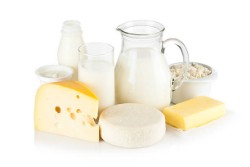
- Pasta. In fact, everything that is prepared on the basis of wheat flour (without bran) can be attributed here.
- Dairy products. Almost all of them contain calcium in a sufficiently large amount, which impairs the absorption of iron. That's right it also affects the level of hemoglobin . This includes almost all varieties of cheeses, butter, sour cream, kefir, yoghurts and other dairy desserts, condensed milk, fermented baked milk.
- Egg whites. Also impair the absorption of iron, preventing biochemical reactions with it involving amino acids. Interestingly, the consumption of chicken proteins has practically no effect on the concentration of iron and folic acid (unlike dairy products and any others that contain calcium).
You should also give up greens during pregnancy. More precisely, it can be included in the diet, but in limited quantities. Parsley , dill, turmeric , basil – all these foods are rich in vitamins and even iron, but they cause spasms of smooth muscles, which is extremely dangerous in the early stages of pregnancy.
During this period, it is better to get vitamins in the form of multivitamin complexes – this will be much safer for the expectant mother and child.
Other important recommendations
You can also raise hemoglobin with the following tips and recommendations:
- Include the following dessert in the diet: a mixture of dried apricots, raisins, walnuts. For the preparation of hemoglobin mixture you will need to take 50-60 grams of the above components, grind them with a meat grinder, coffee grinder or blender and add honey (the same amount as the ground mixture). Store in the refrigerator, take 1 teaspoon 3 times a day. The course is at least 2 weeks, then – if necessary.
- Drink a course of the following vitamin complexes (to choose from): Complivit iron, Perfectile, Sorbifer, Fenyuls. You should definitely consult with your doctor beforehand.
- It is also important to follow the daily routine (activity/rest). The process of hematopoiesis itself mainly occurs at night during sleep. Accordingly, chronic insomnia can provoke hemoglobin deficiency, even if a pregnant woman follows a healthy diet.
Hemoglobin deficiency does not always indicate a lack of iron, certain vitamins. This condition can be caused by certain diseases. Even blood cancer is among them. Therefore, if you suspect a hemoglobin deficiency, you should not postpone going to the doctor. It must be remembered that this is much more dangerous for the unborn child than for the expectant mother.
Related videos
We recommend watching these videos:
;
Conclusion
In total, during pregnancy, the hemoglobin level decreases slightly – this is a normal phenomenon, since a significant part of iron and vitamins go to the development of the fetus in the womb. That is why the need for the above-mentioned elements is increasing, and it can be fully provided by a simple adjustment of the diet.
If this does not bring the desired effect, multivitamin complexes are prescribed, in critical cases– preservative therapy. It is quite simple to normalize the hemoglobin balance, the main thing is to establish the exact cause of its decrease, and only qualified doctors can cope with this task.
